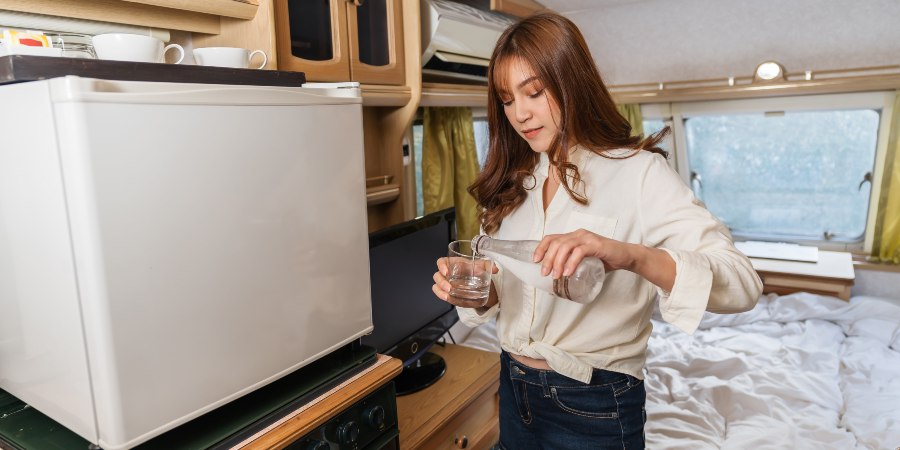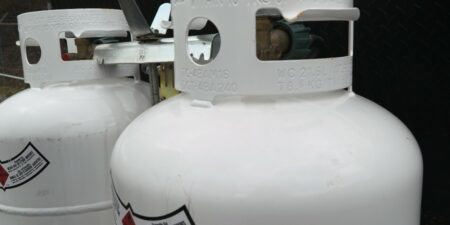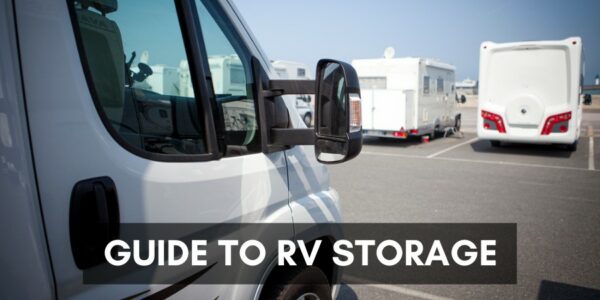Having a refrigerator in your recreational vehicle can turn a simple camping trip into a comfortable and enjoyable journey — or it can lead to unexpected frustrations. An efficiently running RV refrigerator is key to keeping your food cold, fresh, and safe.
In this article, I’m excited to share my road-proven RV refrigerator tips. These insights come from years of navigating the highs and lows of RV life, ensuring that your fridge doesn’t become a source of worry.
I’ll guide you through the best practices for maintenance, energy efficiency, and troubleshooting common issues. Whether you’re a seasoned RV enthusiast or planning your first trip, these tips will help you enhance your RV experience, ensuring that your refrigerator remains your ally on every adventure.
Here are my road-proven RV refrigerator tips:
Know Your RV Fridge
RV refrigerators operate differently than the ones in your house — which is one reason why RV fridges cost more.
An RV refrigerator works on the principle of “gas absorption,” which means that heat (from a power source) moves the refrigerant solution inside the cooling unit.
The unit pulls the heat from the surrounding air and sends it out the vent at the back or top of the refrigerator. What’s left is cooler air. The fridge is insulated and has door seals to keep the cool air in place.
Controls help you set and maintain the level of cold that keeps refrigerator foods fresher and freezer ice solid. To operate efficiently, RV refrigerators must be relatively level, or the refrigerant won’t circulate.
(The pros recommend no more than 3° off of level side-to-side and 6º off level from front to back. I recommend that your rig be level enough to sleep comfortably.)
- Dual Power Mini Fridge with Lock: Techomey 1.45 cu.ft. compact fridge/cooler works on 12-Volt DC or 110-Volt AC power (both power…
- Frost Free Semi Truck Refrigerator: RV refrigerator is a lifesaver that can help you store fresh food and drink for more than a…
- User Friendly: Reversible doors with recessed handles make placing this camper fridge stress-free in any truck or RV design. Door…
- Quiet & Energy Saving: Absorption silent cooling system, no compressor, no noise at all. The absorption fridge consumes 1kWh/day,…
- 1-YEAR WARRANTY: 1-Year warranty for any product quality problems. Techomey aims for quality followed up with quality customer…
Know Your Power Source
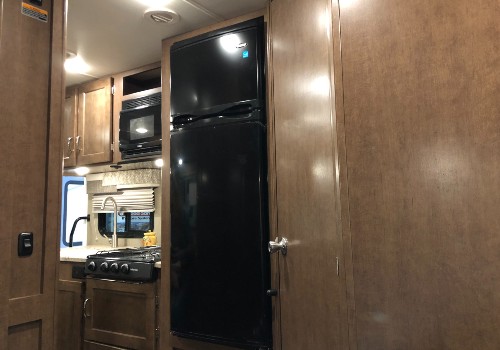
Recreational vehicle refrigerators are either two-way (110-volt AC or propane) or three-way (adding 12-volt DC operation).
Which power source you should use depends on what you are doing. The most efficient refrigeration occurs when the unit is plugged into a 30-amp (or larger) electrical outlet. If using a household extension cord (typically 20-amp), the fridge isn’t quite as efficient.
Use 110-volt AC (alternating current) when preparing your RV for a trip (pre-cooling the fridge) or plug in at an RV park during your trip. The next most efficient is propane (liquid petroleum gas or LPG).
Use propane to power your RV fridge if parked with no 110-volt electricity available, such as dry camping. Finally, the least efficient power source for RV refrigerators is a 12-volt DC (direct current) if equipped.
The power comes from your “house” battery (the 12-volt battery in your RV), which is obviously less power than 110-volt AC. Use 12-volt power for your RV fridge when moving. NEVER drive or pull your RV with the propane ON!
Know the Cooling Controls
RV fridge controls range from simple switches to digital controls that automatically switch between power sources and set temperatures. What controls does your unit have? If you don’t know or they aren’t clear, check the manual.
Want to Connect With a Community of Over 1,078 RV Enthusiasts?
If your unit doesn’t have one, get the make and model number, typically found on a plate on the door frame. Next, search the Internet for the manual. (Be careful: There are phony manual sites that want you to download their malicious software.
Only download directly from the manufacturer or a reputable dealer.
Monitor the RV Refrigerator
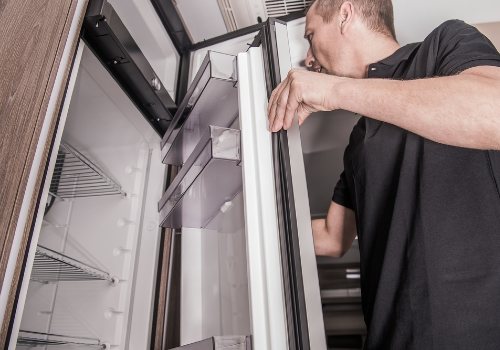
At least twice a day during your trip, take a quick check of your RV fridge. Is it cooling food sufficiently? Is the freezer cold enough to make ice? Also, is the power source set correctly for your use?
14 RV Refrigerator Tips
- Pre-cool your RV refrigerator for at least 24 hours before setting off to ensure it starts at the optimal temperature.
- Ensure your RV is level when parked, as RV refrigerators rely on being level for efficient operation.
- Regularly defrost the freezer compartment to maintain efficiency and increase cooling capacity.
- Avoid overpacking the refrigerator; proper air circulation is necessary for maintaining even cooling.
- Use battery power conservatively by switching to propane mode while driving if your RV fridge supports it.
- Keep the refrigerator door closed as much as possible to maintain a consistent temperature.
- Check and clean the refrigerator’s exterior vents periodically to ensure proper airflow and cooling efficiency.
- Monitor the door seals and gaskets for wear and tear, replacing them as needed to maintain cooling efficiency.
- Consider using a fan inside the refrigerator to improve air circulation and temperature distribution.
- Regularly inspect and clean the burner and flue area if your refrigerator operates on propane.
- Adjust the temperature settings according to the outside temperature and load inside the fridge.
- Use a fridge thermometer to monitor the internal temperature for food safety.
- Store food in airtight containers to prevent moisture buildup and odors.
- Defrost and clean the refrigerator thoroughly before storing your RV for an extended period.
Save Money
Keeping your RV refrigerator in top condition and working efficiently will save you money. You can enjoy fresh food on the road rather than eat out. Use the most efficient power source for your refrigeration needs.
Maintaining your RV refrigerator in peak condition and ensuring its efficiency can lead to significant cost savings. By doing so, you’ll have the convenience of enjoying fresh food during your travels, reducing the need to dine out frequently.
Additionally, selecting the most efficient power source for your refrigeration needs is important for performance and economy.
Saving money is what RV Troop is about. For more ways to save money, read 10 frugal RV tips.
RV Refrigerator Tips and Tricks (Video)
"Man cannot discover new oceans unless he has the courage to lose sight of the shore."
-- Andre Gide

